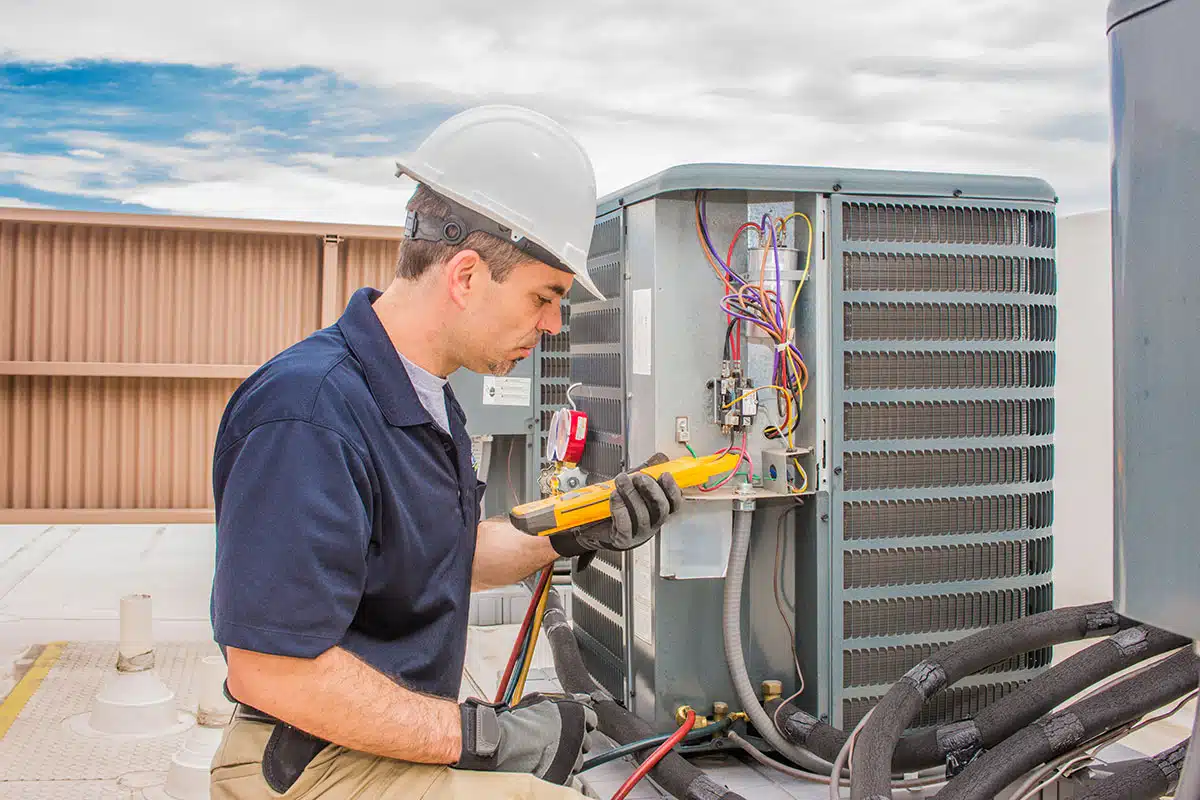For facilities management, the switch from clipboards and paper to smartphones and tablets represents a huge leap forward in productivity. And an important player in this move to remote technology is mobile CMMS (computerized maintenance management system).
The primary advantages of a mobile CMMS are its flexibility and its centralized collection of information. Mobile CMMS provides a picture of operational data that can be viewed simultaneously by managers in the office and technicians in the field. This cloud- and device-based technology also allows updates in real time from any area in a facility, keeping everyone informed. And because it can be accessed through an integrated platform—allowing communication with other facility data and software—this mobile technology can be a game-changer, creating faster ROI by reducing downtime and increasing productivity.
It’s no secret that maintenance management software tools have been pivotal in increasing work order efficiency. Now, by extending data capture and management capabilities, mobile CMMS is providing facilities managers with an even more powerful tool for optimizing facility operations and maintenance.
Mobile CMMS provides a picture of operational data that can be viewed simultaneously by managers in the office and technicians in the field.
What Is Mobile CMMS?
CMMS is software designed to streamline and automate workflow and maintenance tasks. It focuses on MRO (maintenance, repair, and operations) for physical assets and equipment, including the oversight of an organization’s asset maintenance activities, scheduling, and ongoing expenses after installation.
Mobile CMMS is a mobile field app, which means that it allows technicians to carry all the capabilities of desktop facilities management software with them into the field. The app equips field technicians with on-the-spot access to AI-powered tools and human-based assistance, enabling them to solve even the toughest of issues. It also makes work order progress and other critical information available for viewing in real time by managers in the office.
A robust mobile CMMS platform allows field technicians to input job status and other updates at any time and from anywhere using wi-fi or cellular connections. And if the connection is lost, the data is stored for upload as soon as connectivity is reestablished. Likewise, because the app also functions as a repository for essential information, field technicians always have access to critical data, even in the event of a network interruption. In this way, facilities personnel are always able to continue working, even during times of intermittent connectivity.
Efficient and Time-Saving Work Order Management
There are several ways that mobile CMMS can boost maintenance efficiency and allow facilities managers to follow maintenance best practices. One way is by giving facilities managers better control over scheduling and operations.
A Central Location for Work Orders
Mobile CMMS provides a centralized dashboard for creating, assigning, and tracking work orders. With accessible and easy-to-navigate work details available at the touch of a screen, supervisors can track work assignments from the office, and technicians in the field can see exactly what they need to work on next. Additionally, incoming requests for service can be automatically converted to work orders, streamlining maintenance management and optimizing operations.
Optimizing Schedules with Automated Work Orders
A robust mobile CMMS allows facilities managers to customize and automate processes to suit their needs, based on their facility’s unique features and management priorities. Maintenance schedules and work routing rules, for example, can be generated and relayed automatically to technicians, freeing up managers and supervisors to work on other tasks.
When an engineer or maintenance worker accesses or logs into the system, their assigned work is automatically displayed with touchpoints or stages lined up. Workflows can consist of as many or as few stages as each facility deems necessary. As an example, a work order process might look like this:
— Start Work
— Submit Labor
— Submit Work Log
— Submit Status
— Submit Inspection Results
— Submit Follow-up Work Requests
— Submit New Service Requests
— Submit Work Status Complete
Assigned work can be displayed in order of priority and progress can be easily checked as work proceeds, so that technicians spend less time on administrative tasks and are able to focus more on vital maintenance activities.
Scheduling Flexibility and Efficient Prioritizing
Instant and real-time access to work orders eliminates delays and bottlenecks in the maintenance process. Without the need to wait for prioritization decisions, work can continue uninterrupted, with job progress tracked and recorded on the asset’s history profile.
Real-time access also allows quicker response times to urgent matters. Emergencies can be dealt with promptly, preventing costly downtime due to equipment breakdowns or malfunctions. Because a mobile CMMS enables managers to see where technicians are located within the facility and what they are currently working on, it’s easy to determine which technician(s) to direct to an asset that needs urgent attention.

Once alerted, the maintenance worker can then retrieve the required service details on their device, including comprehensive information about the equipment malfunction. And because the asset’s location is provided through the app’s mapping features (for both indoor and outdoor locations), the technician knows exactly where to go, so that no time is wasted trying to locate the malfunctioning equipment.
Cost-Saving Maintenance Operations
Beyond scheduling features that streamline maintenance tasks, mobile CMMS contains tools that aid in lowering costs and improving productivity. These additional features can include:
Predictive Maintenance
Predicting maintenance and averting equipment failure is a cost-saver in any organization. With AI-enabled mobile CMMS, facility professionals can manage and utilize real-time data to create health and risk scores for facility equipment. Data such as unplanned downtime, mean time between failures, or failure rate by manufacturer can be compiled to identify problems and reduce downtime.
Centralized and presented in easy-to-view charts and scores, these insights can inform the technician in the field, automatically trigger preventive maintenance systems, and be viewed by reliability engineers whose job it is to monitor asset lifecycles. Together these data-driven insights can anticipate maintenance needs and potential problems, in addition to optimizing asset performance and extending equipment lifespan.
Cost-Saving Monitoring
With powerful analytics, mobile CMMS can also monitor KPIs (key performance indicators) related to work order management, maintenance costs, and time to repair. Managers can set up customizable dashboards to immediately view current and historical trends and perform analyses to enable continuous improvement, optimize budgets, and enable informed decisions—all of which help keep costs in check.
Recordkeeping for Compliance and Accuracy
Accurate recordkeeping is not only vital for providing insights on performance and for predicting equipment lifespan, it’s also necessary in order to meet industry regulations. Mobile CMMS makes it easier to comply with regulatory standards by ensuring accurate recordkeeping and automating documentation.
With mobile CMMS, all the information gathered by technicians in the course of their work is compiled as it’s entered into their mobile devices, providing up-to-date access to technical and HSE (health, safety, environmental) information. A robust mobile CMMS can then use this information to automatically generate reports that meet compliance requirements.
Making Technicians and Engineers More Productive
It’s an unfortunate fact that just as more facility managers and engineers are retiring, buildings are becoming more complex. According to studies using data from the BLS (Bureau of Labor Statistics), the average facility manager is over 50 years old, and experts predict that approximately 60 percent of experienced facility staff will be retiring within the next seven years. Businesses are now facing a potential shortfall of qualified facility professionals.
By streamlining operations and centralizing information, mobile CMMS can mitigate this looming loss of knowledge and experience. With detailed information available through a handheld device, new and less experienced technicians can easily navigate maintenance complexities, enabling them to handle increasingly complicated and digitally dependent operations. By generating reports and making analyses created by more veteran engineers easy to access, mobile CMMS can be the expert looking over the shoulder of less experienced technicians, providing know-how that previously took years to acquire.
Information such as previous work records, diagrams of equipment (annotated with notes from experienced engineers) can make it easier to identify parts and devise fixes. And if human assistance is needed, the CMMS app enables technicians and engineers to collaborate remotely via phone or tablet. This empowers technicians to make more informed decisions and prioritize tasks, and allows organizations to exponentially leverage their engineers’ knowledge and skills.
Get the Most Out of Your Mobile CMMS
As with all data-dependent software, mobile CMMS comes with one caveat: You get out what you put in. The best results will always be gained when operators and staff have extensive knowledge of the software’s capabilities and functions. Users should also receive training at regular intervals, as mobile CMMS apps are upgraded frequently.
Anytime, Anywhere Facilities Management
Businesses are facing two difficult trends. Buildings are becoming increasingly complex to maintain, and experienced facilities managers are about to enter a retirement wave. But not all the news is bad. Mobile CMMS can help businesses deal with both these trends by making it easy to gather and analyze data from the field, and by helping less experienced technicians benefit from the wisdom of more experienced ones—even when the two are miles apart.
